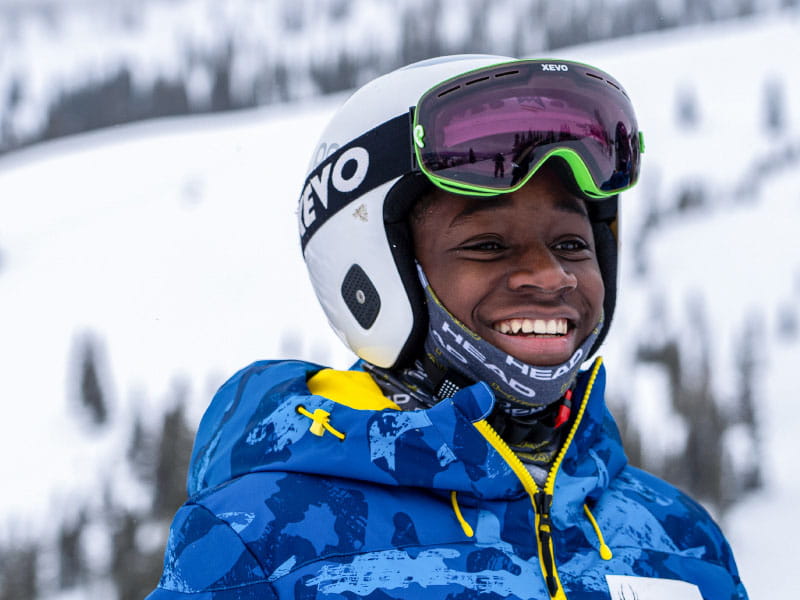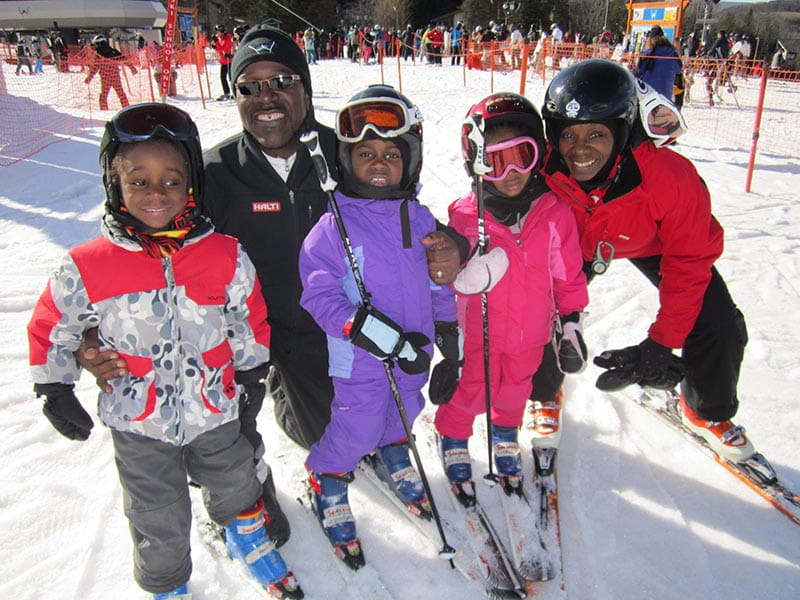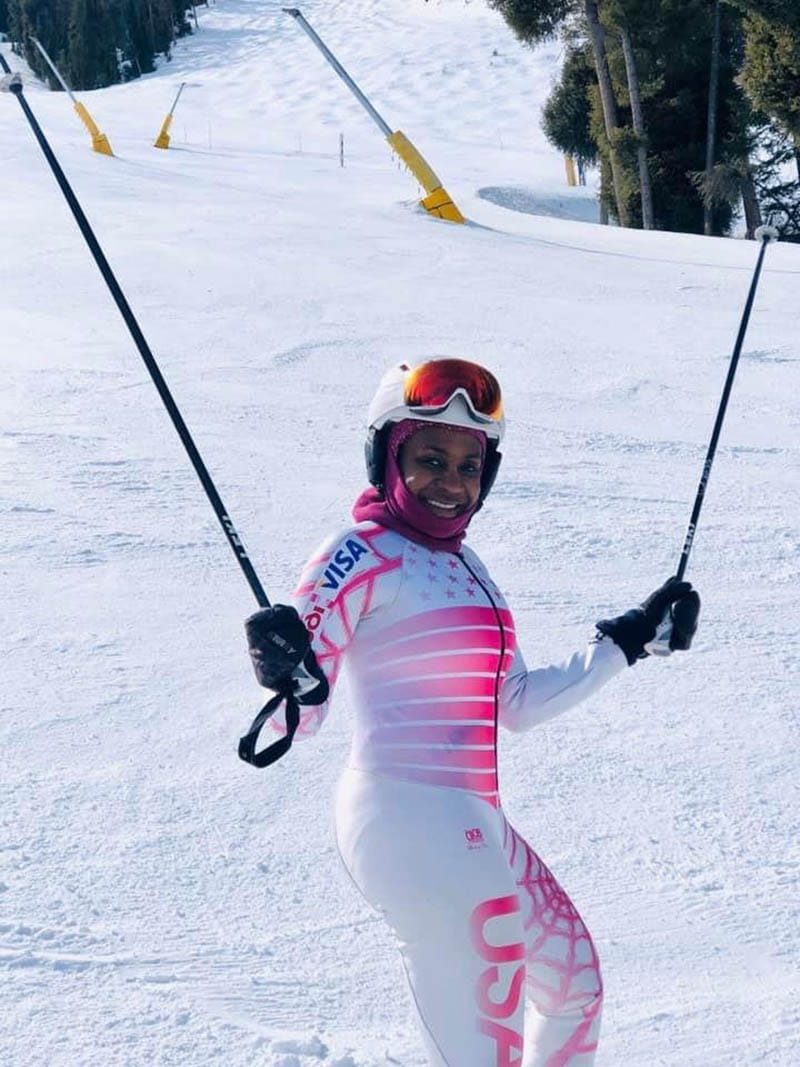Black people rarely hit the ski slopes, but those who love winter sports are working to change that
By Michael Merschel, American Heart Association News

Like many skiers, Dr. Ouida Brown can't narrow her love of the sport down to just one element.
"I love the scenery," said the orthopedic surgeon from Chicago. "I love the people." She loves being the first to make tracks in fresh powder in the morning. She loves the physical and mental challenge of trying to improve her time on a racecourse.
But it's another type of challenge when Brown, who is Black, tries to convey her excitement. "No one else in my family skis," the Mississippi native said. And when she talks about the sport to other Black people, they sometimes look at her and say, "Black people don't ski!"
It's true that Black skiers are a rarity. According to a 2021-22 survey by the National Ski Areas Association, only 1.5% of skiers at resorts were Black – numbers that have hardly changed over the past decade. By comparison, almost 89% of skiers surveyed were white, 5.7% were Asian or Pacific Islander, 5.5% were Latino, and less than 1% were American Indian or Alaska Native, with some respondents selecting more than one race or ethnicity.
Non-skiers are missing out on a healthy opportunity for winter fun. A review of research, published in Frontiers in Physiology in 2019, said regular downhill skiing may contribute to healthy aging. A 2016 study in the Journal of Sports Science and Medicine found that both downhill and cross-country skiing could be solid workouts and bolster heart health. Other studies have shown how spending time in nature is associated with reduced stress and overall well-being.
But historical, geographic and economic factors all contribute to the lack of Black skiers.
Henri Rivers is president of the National Brotherhood of Skiers, which supports development of Black Olympic athletes and encourages participation in winter sports. Rivers said most mountain communities are small, wealthy, predominantly white and far from the urban centers where many Black people work and live. It takes time, dedication and money to get from those centers to the mountains. And ski gear and lift tickets can be expensive.
Rivers, who lived in Queens, New York, until he was 10, learned to ski because his parents bought a home in the Catskills. Now, as a resident of Long Island, he has teenage triplets who are accomplished skiers. The nearest mountain in New York is three hours away – and the teens' ski academies even farther, in New Hampshire and Maine. He and his wife are willing to make the drive on weekends.
"That is not commonplace," said Rivers, who was a renewable energy consultant before becoming a full-time volunteer with NBS, which encompasses 54 clubs and is marking its 50th year of celebrating and recruiting Black skiers.

Adrienne Saia Isaac, director of marketing and communications for the Lakewood, Colorado-based National Ski Areas Association, said skiing's racial gap has broad, systemic roots.
Much of the modern ski industry can be traced to veterans from the Army's storied 10th Mountain Division, who put their elite training to use as they founded more than 60 resorts after World War II. In the segregated Army of that era, though, most Black soldiers had been restricted to service jobs.
"So you've got history where the people most involved were often white," Isaac said. Although, she emphasized, "that's not a valid reason for why skiing remains as predominantly white as it does."
Part of the issue, Rivers said, is that "resorts don't market to people of color." Ski publications, he said, rarely feature Black skiers and riders. "We've been talking to many of those publications, letting them know that they're not representative of people of color."
Unwelcoming attitudes also might dissuade new Black skiers, Rivers said. "You know, they'll get side looks, and people wonder why they're there."
Isaac acknowledged the sport has issues around transportation, access and inclusion, "specifically, people not feeling like skiing is for them." Ski culture itself masked such issues, she said, with some people thinking if you were a good skier, then race, ethnicity, language or gender wasn't an issue. But as in much of the nation, the protests of 2020 were a turning point on racial awareness, she said, and the industry has been working to develop a better understanding of systemic issues and unconscious bias.
That's in everyone's best interest, she said, because America is becoming more diverse. So if the sport wants to bring in more young people, and have folks continue to participate, it needs to make everyone feel included.
Many groups are working to help young, would-be skiers feel that way. Isaac praised the efforts of organizations such as the Share Winter Foundation, which provides grants to make winter sports accessible and diverse; Hoods to Woods, a New York nonprofit that teaches snowboarding to kids from urban areas; and Colorado's Blackpackers, which helps provide gear and training for skiing and other outdoor activity.
For Rivers, such efforts are crucial. "It starts with exposing young children of color to the sport," he said. They need to see "that the outdoors are for everyone."
His organization's affiliated clubs support programs to get kids from underrepresented racial and ethnic groups involved in winter sports. "Skiing, riding, uphill skiing, Nordic skiing, snowshoeing, sledding, tubing – it doesn't matter. I want to get them to experience what is out there."
In early February, the NBS will hold its weeklong annual summit in Vail, Colorado, providing a chance for Black skiers to have fun while raising money to help develop Black Olympic winter athletes.
Brown plans to be there, one of several ski trips she'll make this year. She's a member of the Sugar and Spice Snow and Social Club, a national group affiliated with the NBS. The chance to meet other people drew her to the sport before she entered medical school in North Carolina in the 1990s. "I know a lot of people who would have never skied if it wasn't for the NBS," she said.

It was through Sugar and Spice that she took her 15-year-old godson from Mississippi on his first ski trip last year; this year, she'll also take her 19-year-old goddaughter. Overall, Brown has found people at the mountains she's gone to, from the coaches at her racing camps to fellow skiers, to be warm and welcoming. "Most people are really supportive," she said.
That's important, because everybody is clumsy the first time out. "You're going to fall a couple of times," she said. "You're not going to look so cool when you first start."
That means everyone on the mountain can play a role in making the sport more welcoming, Isaac said. "Skiers and riders need to be better ambassadors for the sport. Because being new at something is scary."
If you have questions or comments about this American Heart Association News story, please email [email protected].





